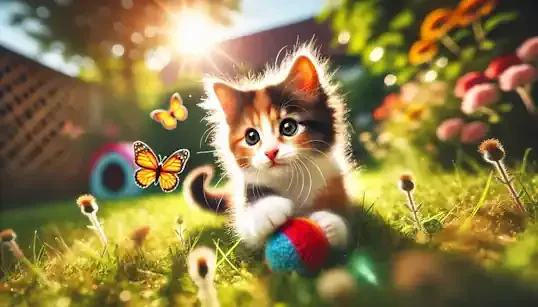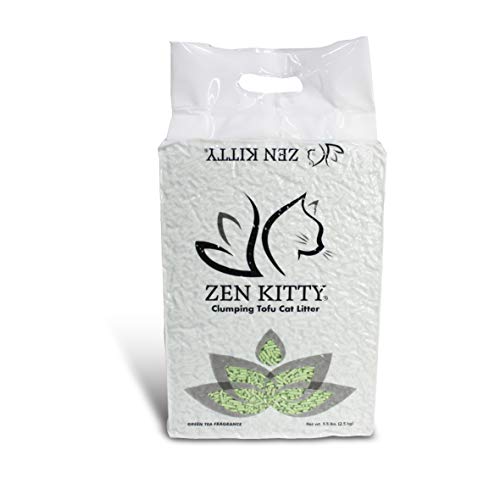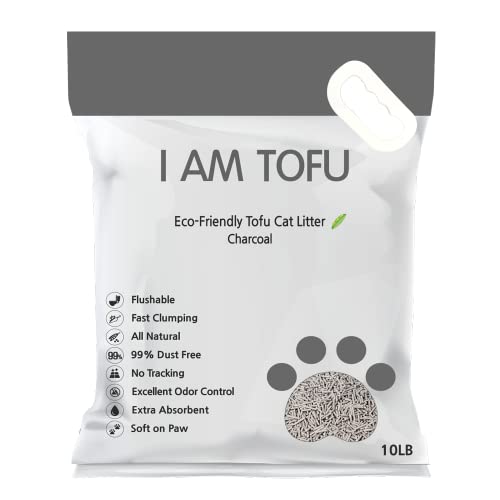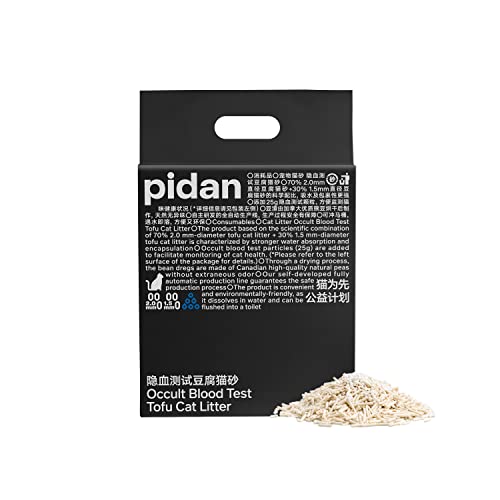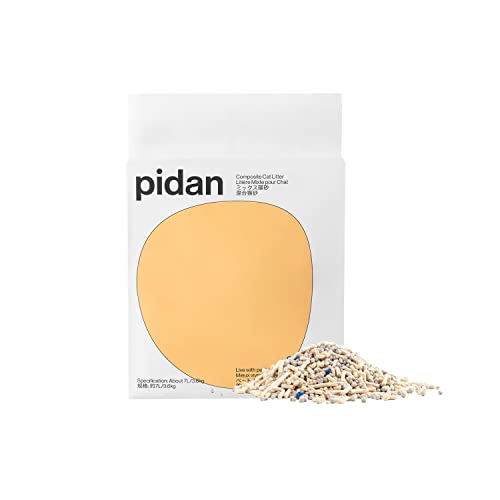Bringing a kitten into your life is an incredibly exciting and rewarding experience! Those tiny paws, playful antics, and endless purrs bring so much joy and warmth into a home. The arrival of a kitten is a momentous occasion, filled with the promise of years of companionship and feline affection. But with that joy comes a significant responsibility – ensuring your new furry family member stays happy and, most importantly, healthy. Kittenhood is a truly critical period in a cat’s life, a time of rapid growth, development, and exploration. During these early months, kittens are undergoing significant physical changes, their immune systems are still maturing, and they are learning about the world around them. This makes them more vulnerable to illnesses and health challenges than adult cats and necessitates a special kind of care and attention. Providing proactive and attentive care during kittenhood is not just about addressing immediate needs; it’s about setting the foundation for a long, healthy, and vibrant life for your feline companion. It’s about ensuring they have the best possible start, allowing them to thrive and blossom into healthy and well-adjusted adult cats. This guide is designed to be your practical companion, a roadmap filled with essential advice and actionable steps to help you navigate the journey of kitten ownership and ensure your little one stays healthy and happy from the moment they arrive in your home and for many joyful years to come. We’ll cover everything from the crucial first veterinary visit to the daily essentials of nutrition, hygiene, creating a safe environment, and knowing when to seek help, equipping you with the knowledge and confidence to nurture your kitten’s well-being every step of the way.
One of the very first and most important actions you should take after welcoming your kitten home is scheduling an initial veterinary visit. Ideally, this visit should occur within the first few days of your kitten joining your family. This initial checkup is not just a formality; it is a cornerstone in setting your kitten on a path to lifelong health. This visit serves multiple critical purposes. First and foremost, it allows your veterinarian to perform a comprehensive physical examination, establishing a baseline assessment of your kitten’s overall health. The vet will meticulously check everything from their heart and lungs to their eyes, ears, teeth, and coat, looking for any signs of congenital issues, underlying health conditions that may have been present since birth, or any early indicators of potential problems. Early detection is key, and this initial exam can help identify issues that are much easier to manage when addressed promptly. Secondly, this initial visit is essential for parasite management. Kittens are particularly vulnerable to both internal and external parasites. Your veterinarian will check your kitten for common external parasites like fleas, ticks, and ear mites, and for internal parasites through a fecal examination to detect intestinal worms. If parasites are detected, your vet can immediately initiate appropriate treatment to eliminate these unwelcome guests and prevent further complications. Even if no parasites are found during the initial examination, your vet will discuss preventative measures and recommend a deworming protocol to ensure your kitten remains parasite-free. Thirdly, the initial veterinary visit is the perfect time to discuss and plan your kitten’s vaccination schedule. Vaccinations are absolutely vital for protecting kittens from a range of serious and often deadly infectious diseases. Your veterinarian will discuss the core feline vaccines, typically the FVRCP vaccine (protecting against Feline Panleukopenia, Calicivirus, and Herpesvirus) and the Rabies vaccine (often legally required), and may also recommend the Feline Leukemia Virus (FeLV) vaccine depending on your kitten’s risk factors and lifestyle. The initial visit is when the first dose of the core vaccines will typically be administered, setting in motion the crucial vaccination series that will build your kitten’s immunity. Finally, beyond the physical examination and preventative care, your initial vet visit is an invaluable opportunity to receive personalized advice on all aspects of kitten care. Your veterinarian can provide tailored recommendations on appropriate kitten food choices, discuss litter box setup and training, offer grooming tips, answer any general kitten care questions you may have, and establish a strong veterinary-client-patient relationship right from the start. Finding a veterinarian you trust and who is experienced in kitten care is essential. Building a good relationship with your vet from the beginning will ensure you have a trusted partner in your kitten’s health journey for years to come.
To help your new kitten transition smoothly and feel secure in their new environment, creating a safe and comfortable “kitten zone” is highly recommended, especially during the initial days and weeks after they arrive home. This dedicated space provides a haven where your kitten can adjust, de-stress, and feel safe amidst the unfamiliar surroundings of their new home. Your kitten zone should ideally be located in a quiet and secure area of your home, away from high-traffic areas, loud noises, and potential stressors. A spare bedroom, a quiet corner of your living room, or even a large, comfortable pet carrier can serve as an excellent kitten zone. Within this zone, create a cozy and inviting environment. Provide comfortable bedding, such as a soft kitten bed, blankets, or a den-like space where your kitten can retreat and feel protected. Ensure food and water bowls are readily available within the zone, choosing bowls that are appropriately sized for a kitten and easily accessible. Place a litter box within the kitten zone, choosing a low-sided litter box that is easy for a small kitten to enter and exit. Locate the litter box away from the food and water bowls to encourage good hygiene. Introduce a scratching post or pad within the kitten zone right from the start, encouraging your kitten to develop healthy scratching habits in appropriate places from day one. Finally, provide a selection of safe and kitten-appropriate toys within their zone – soft toys, crinkle balls, and interactive toys that are not small enough to be swallowed. This dedicated “safe zone” serves as your kitten’s personal sanctuary, a place where they can retreat, feel secure, and gradually acclimate to their new home at their own pace, minimizing stress and promoting a sense of well-being. Once you have established a comfortable kitten zone, remember that introducing your new kitten to the rest of your household, including humans and any resident pets, should be a gradual process. Avoid overwhelming your kitten with too much interaction too soon. For human family members, encourage quiet and gentle interactions initially. Allow the kitten to approach people at their own pace, rather than forcing interaction. Offer gentle petting and speak softly to your kitten, creating positive associations with human contact. For introducing your kitten to resident cats or dogs, scent swapping is an excellent first step. Exchange blankets or toys between your new kitten and resident pets, allowing them to become familiar with each other’s scents before direct visual contact. Once scent familiarity is established, begin supervised short introductions, ideally through a barrier like a closed door or pet gate. Allow them to see and smell each other without direct physical access initially. Gradually increase the duration of supervised interactions as they show positive signs – calm body language, curiosity without aggression or fear. Always supervise initial interactions closely and be prepared to separate them if stress or aggression arises. Patience is paramount during the introduction process. Allow your kitten to adjust to their new home, family, and any resident pets at their own speed. A slow and gradual introduction minimizes stress and fosters positive relationships, setting the stage for a harmonious multi-pet household and a confident and well-adjusted kitten.
Proper nutrition is the cornerstone of a healthy kitten. Fueling their rapid growth and boundless energy requires a diet specifically formulated to meet their unique nutritional needs. It’s crucial to understand that kitten food is not just a marketing term; it is fundamentally different from adult cat food and is essential for optimal kitten development. Kitten food is specially formulated to be richer in calories, providing the high energy levels needed to support their rapid growth spurts and active play. Kittens are essentially tiny, rapidly growing machines, and they require significantly more calories per pound of body weight than adult cats to fuel this growth process. Furthermore, kitten food contains a higher percentage of protein than adult cat food. Protein is the building block of muscles, tissues, organs, and a robust immune system, all of which are undergoing rapid development in kittens. Adequate protein intake is absolutely crucial for proper growth and development during kittenhood. Beyond calories and protein, high-quality kitten food is meticulously balanced to provide higher levels of essential vitamins and minerals that are vital for kitten development. Minerals like calcium and phosphorus are essential for building strong bones and teeth, while specific vitamins support various aspects of growth and immune function. Kitten food is also often enriched with essential fatty acids, such as DHA and ARA, which are crucial for brain and vision development during this critical period. Adult cat food, while perfectly suitable for maintenance in adult cats, simply does not provide the elevated levels of calories, protein, vitamins, and minerals that kittens require to thrive and reach their full growth potential. Feeding a kitten adult cat food can lead to nutritional deficiencies and hinder their proper development. When choosing a kitten food, prioritize high-quality options from reputable brands. Carefully examine the food label and look for key indicators of quality. The food label should clearly state that it is “complete and balanced for kittens,” often with a reference to AAFCO feeding trials or nutrient profiles, ensuring it meets established nutritional standards for kitten growth. Look for a named meat source, such as chicken, turkey, or salmon, listed as the first ingredient on the ingredient list. This indicates a good quality protein source is the foundation of the food. Ideally, opt for kitten foods with shorter ingredient lists that feature recognizable, wholesome ingredients, and avoid foods with excessive fillers, artificial additives, or vague “meat by-products” listed as primary protein sources. If you are unsure about which kitten food is best, don’t hesitate to discuss food choices with your veterinarian. They can provide personalized recommendations based on your kitten’s breed, size, activity level, and any specific health considerations.
When it comes to kitten food, you will typically encounter both wet food (canned or pouches) and dry food (kibble) options. Both wet and dry kitten food have their own set of pros and cons, and many kitten owners find that a combination of both types can be ideal. Wet kitten food has a significantly higher moisture content compared to dry food, which can be beneficial for hydration, especially in kittens who may not always drink enough water on their own. Wet food is also often more palatable and appealing to kittens, particularly very young kittens or those who are picky eaters. The softer texture of wet food can also be easier for very small kittens to eat, especially during the weaning transition. However, wet food can be more expensive than dry food on a per-calorie basis, and once opened, wet food spoils relatively quickly and needs to be refrigerated. Wet food is also less beneficial for dental health compared to dry food. Dry kitten food, on the other hand, is generally more convenient to store and serve and can be left out for “grazing” throughout the day (although portion control is still important, even with dry food). Dry food is typically more economical than wet food and can contribute to dental health in some kittens, as chewing kibble can help scrape plaque and tartar from teeth. However, dry food has a lower moisture content, which may be less ideal for kittens who are not naturally big drinkers. Many kitten owners opt for a combination feeding approach, offering wet food meals once or twice a day for hydration and palatability, and providing dry food available throughout the day for grazing and convenience. Ultimately, the best type of kitten food, or combination of food types, will depend on your individual kitten’s preferences, your lifestyle, and your veterinarian’s recommendations. Regardless of whether you choose wet, dry, or a combination, kittens need to eat more frequently than adult cats. Due to their rapid metabolism and small stomach size, kittens thrive on smaller, more frequent meals throughout the day. During the weaning period up to around 4 months of age, kittens typically need 4-5 small meals per day to fuel their rapid growth. Between 4 and 6 months, you can gradually reduce feeding frequency to 3-4 meals per day. By 6 to 12 months, kittens can usually transition to 2-3 meals per day, gradually moving towards an adult cat feeding schedule around their first birthday. Portion control is crucial, even for rapidly growing kittens. Always follow the feeding guidelines provided on the kitten food packaging as a starting point, but adjust portion sizes based on your kitten’s individual body condition, activity level, and veterinarian’s recommendations. Avoid free-feeding unless specifically advised by your veterinarian, as this can lead to overeating and weight gain, even in kittens. Fresh, clean water should be available to your kitten at all times. Hydration is absolutely key for kitten health, especially if you are feeding dry food, as dry food has a lower moisture content. Provide multiple water sources around your home – bowls, fountains – to encourage your kitten to drink regularly.
Finally, it’s vital to be aware of foods that are absolutely toxic and unsafe for kittens and should be strictly avoided. Chocolate, in all forms, is toxic to cats and kittens and should never be given. Onions and garlic, and other members of the allium family, are also toxic and can cause serious health problems. Grapes and raisins, even in small amounts, can cause kidney failure in cats. Alcohol is toxic to cats and should never be given. Raw dough containing yeast can be dangerous if ingested as it can rise in the stomach and produce alcohol. Xylitol, an artificial sweetener found in many sugar-free products, is highly toxic to cats. Caffeine, found in coffee, tea, and energy drinks, is also toxic. Milk, while often depicted as a treat for cats, can actually cause digestive upset in many kittens and adult cats after weaning due to lactose intolerance. Cooked bones, especially from poultry, can splinter and pose a choking hazard or cause internal injuries if ingested. Keep all of these toxic foods strictly out of reach of your kitten to prevent accidental ingestion and potential health emergencies.
